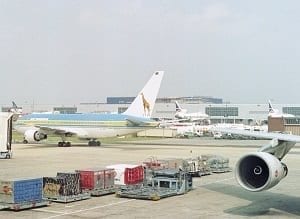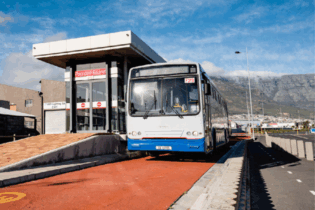South African truck buyers have warmed considerably to automated manual transmissions (AMTs), as Tristan Wiggill discovers.
Initial demand for AMTs in the South African market came from the extra-heavy segment, where the transmission was credited with increasing the service life of clutches. “I would estimate that, over the last five years, there has been a shift to AMT vehicles of around 30% in South Africa – that is, from 20% of the trucks sold in 2010 to 50% of the trucks sold in 2015,” says Andreas Brück, engineer: OE Sales and Application: Truck and Bus at ZF Services South Africa. While the automated solution has become more common in the medium and heavy segments, having proven itself in the extra-heavy market, AMT use in the light commercial vehicle segment is also showing steady growth, particularly in recent years. “Since we launched the AMT Duonic transmission last year, sales of Fuso trucks have increased by 40%, says Kobus van Zyl, executive director: Sales and Marketing at Daimler Trucks & Buses. Apart from increasing the lifespan of transmissions, the technology is also credited with positively influencing safety, by allowing drivers to better concentrate on the road while reducing driver fatigue caused by continuous clutch engagement and disengagement. This is a significant plus in a region of the world with extraordinarily high vehicle accident rates. The ability of AMT to reduce fuel consumption, by operating in a “green band”, means that it actively contributes to a transporter’s bottom line. AMTs can cope with higher payloads and there are savings to be had in transmission servicing and repairs. Furthermore, AMT creates the opportunity for transport operators to reduce maintenance costs in a way that doesn’t endanger their drivers or other road users. SophisticationBrück says the complexity of AMT lies in the software used in the programmes that ensure correct gear selection and economic driving – two of AMT’s strongest selling points.
He says accurate production costs are difficult to define. “Local fitment costs can be kept to a minimum, provided the model of vehicle is available abroad with the transmission already approved. The cost of AMT in terms of hardware is not significantly more than its manual counterpart, as the production volumes of AMT variants are steadily increasing. There is, however, a nominal additional cost incurred by the introduction of the automated shifting system and accompanying electronics,” he explains. Older manual transmissions typically have 16 gears, with drivers having to concentrate on changing them properly. The grating of gears in these vehicles is, therefore, not uncommon and, if a driver makes a mistake, they sometimes have to start again from standstill. AMT, on the other hand, comes into its own when laden vehicles are driven on an incline. “Driver errors were proving to be very expensive for vehicle operators and, as a result, fleet owners started to demand that drivers have less influence on the entire driveline,” adds Brück. Learning curve Adventurer and truck driving rookie Riaan Manser’s acclimatisation to the 16 tonne extra-heavy MAN TGX he partly drove into Africa and back last year was hastened, in part, by the ease of use and accessibility of AMT. However, AMTs still suffer from a perception problem among many drivers, some of whom swear by their more macho manual transmissions. While the trucking industry is still heavily male dominated, commercial vehicle manufacturers and operators would surely benefit from less-intimidating trucks. Proven to be safer, women drivers, behind the wheel of AMT-equipped vehicles, could potentially save transport companies thousands of rands while bringing fresh faces to the transport mix.







